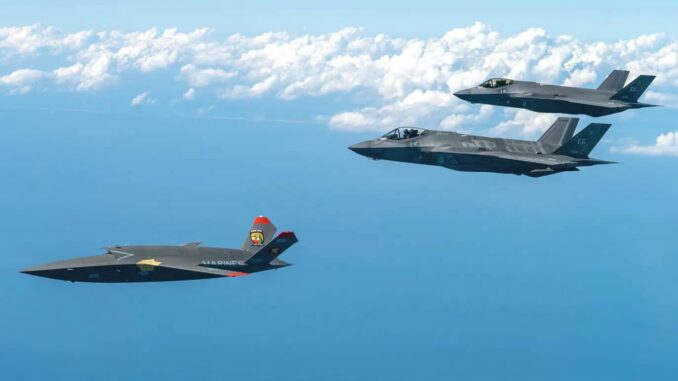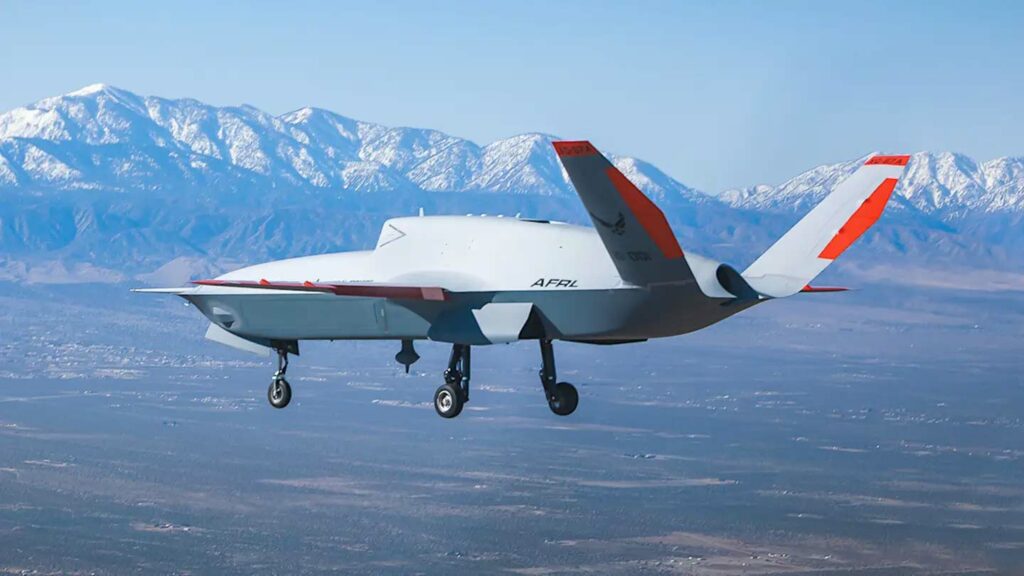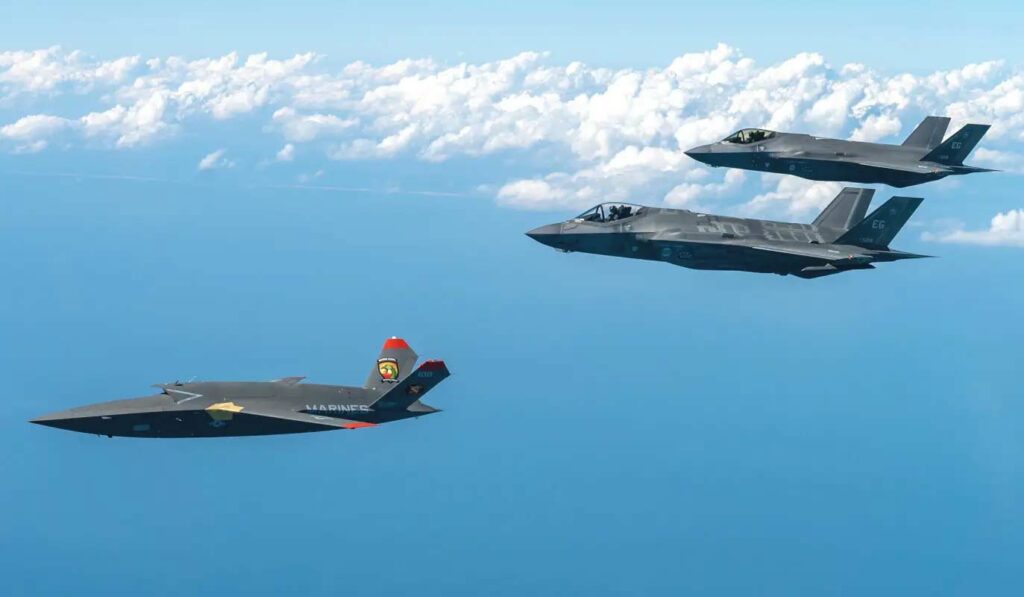
Explore the first flight of the XQ-67A, a major breakthrough in UAV development thanks to the LCAAPS program, promising innovation and versatility in aerial missions.
The U.S. Air Force Research Laboratory (AFRL) and General Atomics Aeronautical Systems Inc (GA-ASI) have reached a significant milestone with the successful first flight of the XQ-67A Off-Board Sensing Station (OBSS), a crucial milestone under the auspices of the Low-Cost Attritable Aircraft Platform Sharing (LCAAPS) program. This program aims to radically transform the development of Unmanned Aerial Vehicles (UAVs), introducing an innovative approach to the creation of low-cost, specialized aircraft.

The LCAAPS Program: An Innovative Paradigm
Foundations and Objectives
LCAAPS embodies a revolutionary strategy in UAV design, introducing the “genus/species” approach to developing versatile, low-cost aircraft. This program is the evolution of the Low-Cost Attritable Aircraft Technology (LCAAT) project, which laid the foundations with the XQ-58 Valkyrie demonstrator, a precursor demonstrating the principles of rapid, economical production.
The XQ-67A: First Practical Application
The XQ-67A, the program’s first concrete achievement, is optimized for intelligence, surveillance and reconnaissance (ISR) missions. It symbolizes the practical application of the “genus/species” model, where a common chassis makes it possible to develop various “species” of aircraft for specialized functions.
XQ-67A Features and Capabilities
Design and Features
Prioritizing endurance for prolonged ISR missions, the XQ-67A is designed to collect sensor data over extended periods, sacrificing speed and maneuverability for prolonged and efficient standby. This specialization enables continuous surveillance, essential for supporting troops on the ground.
Outlook: OBSS and OBWS
The program plans to develop complementary variants, notably the Off-Board Weapon Station (OBWS), focusing on speed and maneuverability for offensive missions, forming a versatile duo with the OBSS to cover a range of tactical missions.
Strategic and Operational Implications
System advantages
The “genus/species” approach offers remarkable flexibility in UAV development, enabling rapid adaptation to changing military mission requirements and significantly reducing production costs and lead times.
Challenges and limitations
However, this strategy imposes specific design choices that can limit individual aircraft versatility, with each “species” optimized for distinct roles rather than extensive multitasking capability.
Potential and future prospects
The success of the XQ-67A paves the way for the expansion of the LCAAPS concept, envisaging a diverse fleet of UAVs capable of dynamically adapting to a multitude of operational scenarios, transforming the landscape of unmanned aerial technologies.
The first flight of the XQ-67A under the LCAAPS program marks a turning point in the design and use of UAVs, demonstrating significant potential for the future of military aviation. This initiative promises a rapid evolution towards more adaptive, efficient and cost-effective unmanned aerial systems, ready to meet the complex challenges of modern operational environments.

The success of the XQ-67A illustrates a major step forward in UAV development strategy, offering a versatile platform that could revolutionize military air capabilities thanks to its adaptability, efficiency and cost-effective approach, while posing challenges for the balance between specialization and flexibility.
War Wings Daily is an independant magazine.